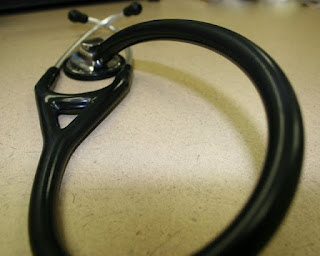By Whitney Redding, Pharm.D., PGY1 Pharmacy Practice Resident, Johns Hopkins University Hospital
Social learning is defined, in the simplest terms, as the process by which a person learns from observing others. The belief is that we are most likely to model our behavior based on what we have learned from watching those around us. The best models are those to whom we relate the most – often our peers.1 Learning in a social setting plays a critical role in how we gather information and adapt successfully to our environment, but it can also be how we pick up less effective, less healthy habits.
As a freshman, I lived in a dormitory on a special floor designed for pre-pharmacy students, called a “Pharmacy Learning Community.” Our neighbors became our colleagues and we learned from each other not only the material taught in our classes, but also how to study and adapt to college life. I would say that I learned many good behaviors from those with good study habits on my floor, and I learned what not to do from those with poor study habits. I also picked up some very poor eating habits from my college peers, which differed from the environment in which I was raised.
For my sophomore year, I enrolled in Organic Chemistry. Our professor divided us into study groups the first week based on our previous GPAs. Together we discussed problems during class, completed extra credit assignments, studied and took exams. In addition to the active learning strategies used in the classroom this course created an atmosphere that embraced social learning among peers. Groups that collaborated outside the classroom learned more and performed better than the groups that spent less quality time together.2
When it comes to our health, social learning is also a key element to success. Patients, as the learners, adopt habits from their friends and family that impact their risk of disease. In a study published in the New England Journal of Medicine by Christakis and Fowler, it was found that among groups of friends, if one friend developed obesity, the other friend(s) was 171% more likely to become obese.3 And this increased risk of obesity was correlated to social closeness (rather than geographic closeness). In another study, smoking cessation was increased when a spouse or family member quit smoking. Moreover, smoking cessation tended to occur in clusters of people (not single individuals, one at a time) and in those with larger social networks.4 This research provides evidence that the impact of social networks on health cannot be ignored.
I wonder how effective it would be to create health learning communities for our patients, or health study groups. This has already been done in the setting of Alcoholics Anonymous, diabetes education and cancer support networks, but could also be expanded to smoking cessation, obesity and any number of other health-related behaviors. Research has been expanding in the areas of online health networks, and their impact on social learning. Even television has tried to take advantage of observational learning in such shows as The Biggest Loser. The trend towards not only patient-centered care, but also family-centered care, is another example of ways the healthcare system should embrace social learning to improve health outcomes.
It is important to look at the big picture of health. How successful will a patient be at losing weight … when his or her closest friend is gaining weight? How easy will it be to quit smoking, when one’s social network continues to smoke? How reliably will one take his or her medication, when his or her spouse has difficulty (or doesn’t believe in) taking medications? It seems to me a patient’s social environment and the role of social learning must be considered when implementing patient interventions. How do we learn to use the power of social learning? Our patients may help us gain a better understanding of how to encourage healthy behavior. Perhaps pharmacy education could provide opportunities for us to utilize this theory of learning to advance patient care. Both patients and healthcare workers alike would benefit from discussing the impact of how society and our own social networks impact our health.
1Schunk DH, Hanson AR. Peer models: Influence on children’s self-efficacy and achievement. Journal of Educational Psychology 1985;77:313-322.
3Christakis NA, Fowler JH. The spread of obesity in a large social network over 32 years. N Engl J Med 2007;357:370-9.
4Christakis NA, Fowler JH. The collective dynamics of smoking in a large social network. N Engl J Med 2008;358:249-58.
[Editor's Commentary: Clearly the social context in which we learn has a powerful impact on our behaviors. Cultural norms of behavior are generally acquired through modeling ... not through explicit instruction. While teachers and health care practitioners do have some influence on behaviors, we need to face the (sad) truth that our influence is rather small. Very small. Direct instruction - lecturing and/or counselling people on what they should (or should not) do - is ineffectual. Active engagement improves the odds that someone will adopt a behavior ... and social engagement with influential peers improves the odds further still. The risk of disease and the management of chronic illness is far more dependent on the social context than any "traditional" intervention that health professional "prescribe" or "counsel" patients to do. And yet, our expectations as a society (and our payment systems) are built around one-on-one interactions between a patient and a health care provider ... rather than working with families and communities. Public health practitioners have known for a long time the power of family and community on health outcomes. Perhaps under a reformed healthcare system in the United States we'll learn how to PAY FOR best practices that harness the power of social learning. To see what the University of Maryland School of Pharmacy is doing to improve the health of our community and to be a role model for social learning, check out our Rx for Health Habits website. - S.H.]







